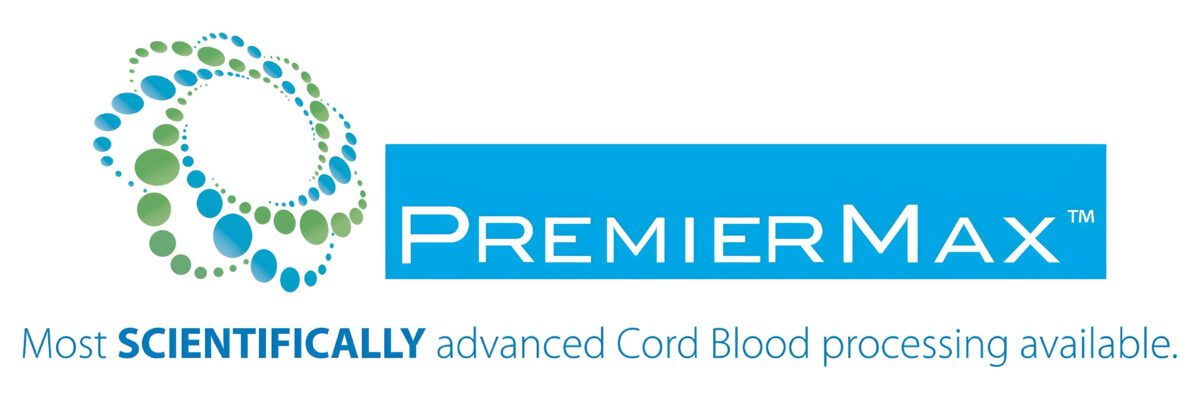
In developing our stem cell processing method, we looked at four things: quality, safety, flexibility, and cost – the same things every parent should consider when choosing a cord blood bank. The result is PREMIERMAX ® – the PREMIER process that results in MAXIMUM stem cell recovery and transplant safety. Every cord blood collection is different, so we developed a process that would yield the highest number of stem cells under all circumstances. Many factors contribute to the number of stem cells in a cord blood collection. Variables like the number of previous pregnancies, the mother’s age, the volume of cord blood collected, and the processing method all come into play. Since the maternal factors and delivery room collection are a given, the processing method is the key to getting the most stem cells possible from newborn cord blood. Having been in the industry since 1993, we have seen cord blood banking come a long way since the days of hetastarch, a first generation method. Over years of processing both public and private cord blood collections, we have developed a method the delivers the best results for patients. Clinical research by the US National Library of Medicine of the National Institute for Health has validated our process. A team of scientists from the Cell Therapy Research Institute and the Newcastle Centre for Cord Blood published two separate studies that reached the same conclusion – our process is superior to hetastarch. The unbiased research team concluded that our process “is consistently the best performer over the whole range of analysis.” It provides the most efficient recovery, the highest red cell depletion, and reduces the risk for contamination. Our process recovers almost 75% of your newborn’s stem cells, while hetastarch recovers a little more than half (56.48%). This means that many more precious stem cells are being recovered for future use with PREMIERMAX® In any laboratory that processes blood, preventing contamination is a priority. Again, the researchers found that our chosen method is superior. We use a closed system, meaning that the risk is much lower for transfer of contaminates from other surfaces to your child’s cord blood. However, safety goes beyond preventing contamination. It also means ensuring that the transplant unit offers the lowest risk of adverse reaction in the patient. Two things come into play here: red cell depletion and the cryo-preservative. Why is it important to separate the stem cells from the whole blood? For a few reasons. First, there’s no need to store plasma or red blood cells as they don’t contain any stem cells and aren’t needed for transplant. More importantly, red blood cells tend not to survive the freezing and thawing process. Their cell membranes rupture, spilling the contents, which include the hemoglobin and empty membrane sacks called red cell “ghosts”. This can make patients sick following transplant. The fewer the red blood cells, the safer the transplant. Our process removes 98.5% of the red blood cells, compared to 33.45% for hetastarch – a clear difference. When it comes to transplant safety, the cryo-preservative also matters. It needs to protect the stem cells from damage during storage and the patient from toxic chemicals during transplant. Our preservative keeps cells from being damaged and is less toxic than other products currently being used by other cord blood banks. The amount of cord blood varies widely and you never know how much you will get until you are in the delivery room. Here’s why that matters: Research shows something really surprising when it comes to the amount of Total Nucleated Cells (TNCs) extracted from different volumes of cord blood. When using hetastarch, the higher the volume of cord blood the LOWER the yield of CD34+! This means that even though your physician collects a high volume of cord blood, the hetastarch becomes diluted and doesn’t work as effectively, leaving a higher percentage of stem cells behind to be discarded. Since hetastarch already yields only about 56% of the stem cells, higher cord blood volumes could mean over half of your child’s stem cells are discarded. With our PREMIERMAX®, you get the same yield, regardless of volume. That means that whether you collect a lot of cord blood or a little, you can be confident that you will always get the most out of your collection – on average almost 75 percent of the stem cells. Why take chances, when you won’t know how much cord blood is in your collection until your baby is born? At that point, it’s too late to change banks.
More Stem Cells
Safer Transplants
Consistency






Our purpose is to provide the expectant mothers with information necessary to discover the lifesaving potential of umbilical cord blood.
Cord for Life®
Resources
Copyright Cord for Life 2019. All rights reserved.
